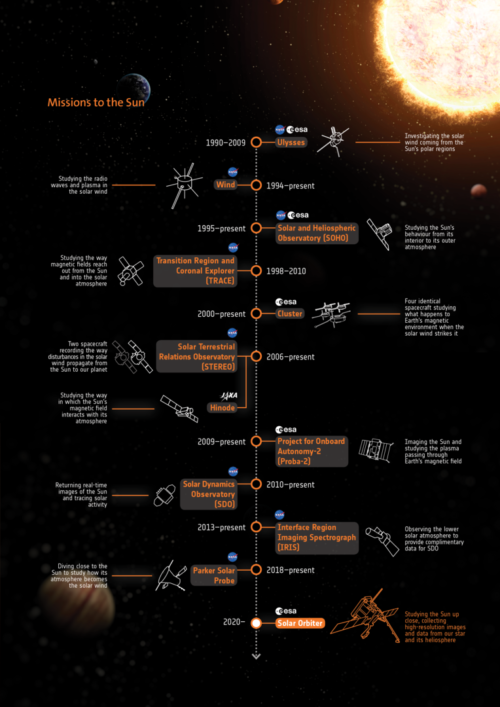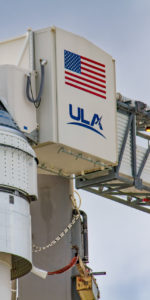
We’ve been hearing a lot about NASA’s Parker Solar Probe (PSP), which has been making close flybys of the Sun to learn more about how our star evolved and behaves. But now, another mission is getting ready to follow in its footsteps – Solar Orbiter. Both spacecraft / missions will even work together, to unravel long-standing mysteries about the sun and reveal it to humanity like never seen before.
It’s a mission of the European Space Agency (ESA), but with strong NASA collaboration. Like PSP, Solar Orbiter will conduct close observations of the Sun, but with a focus on the polar regions. It’s currently scheduled for launch on Feb. 5, 2020 from Cape Canaveral, Florida on an Atlas V 411 rocket, when the alignment of Earth and Venus becomes suitable for Solar Orbiter to start its trek.
AmericaSpace was invited to Astrotech Space Operations in Titusville, FL recently to visit the spacecraft for ourselves, and speak with program managers as it undergoes final processing for launch next February. See above!
On Nov. 1, 2019, the spacecraft, along with ground support equipment, was transported by cargo plane from Munich, Germany to Florida, landing at the Shuttle Landing Facility at Kennedy Space Center. The spacecraft and its science instruments are being repeatedly checked to make sure everything is in working order well ahead of the launch.
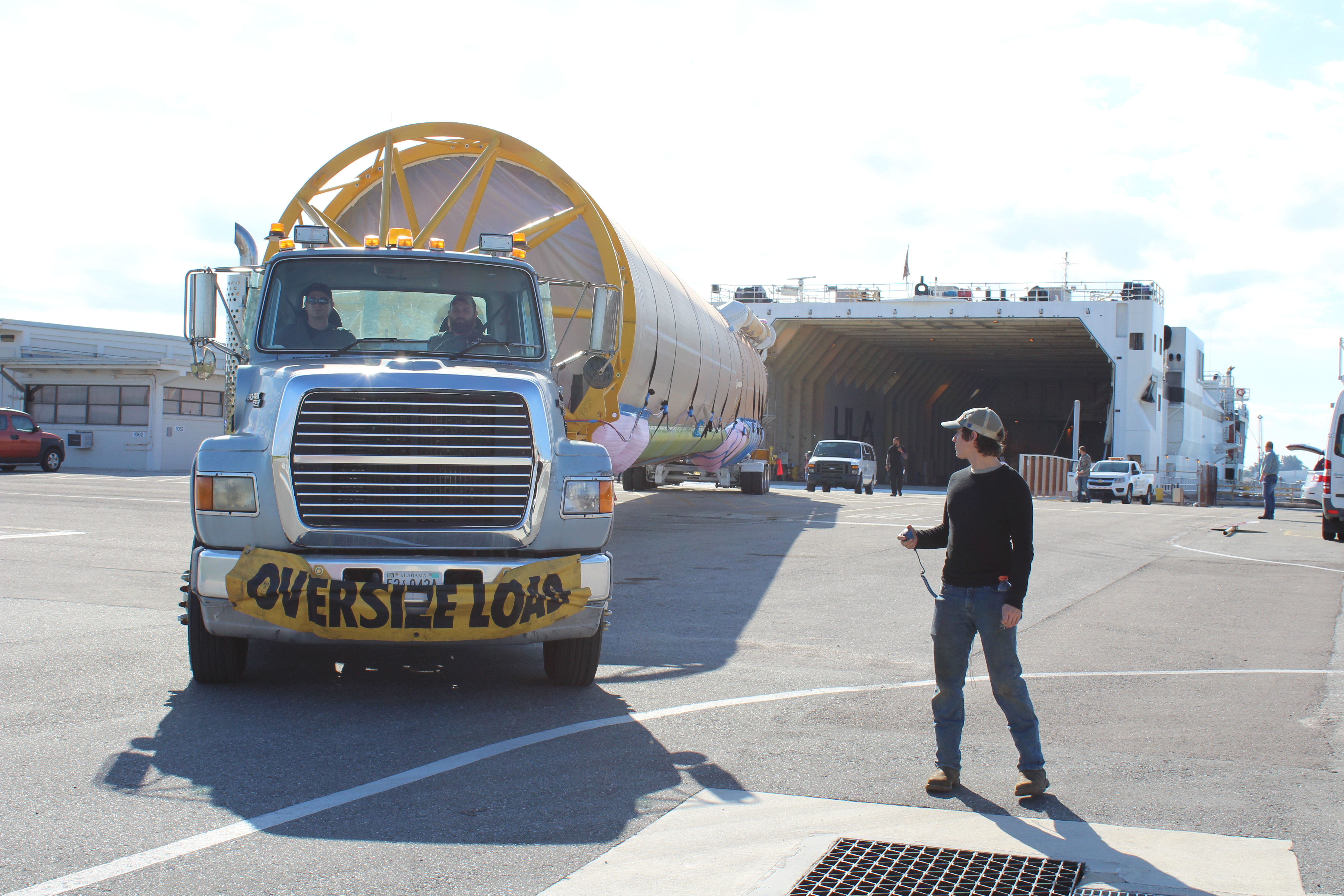
After the new year, the spacecraft will be mated to the launch adapter, and encapsulated inside the rocket’s bullet-like payload fairing to protect Solar Orbiter during the violent ascent off Earth. Lastly, the spacecraft will be transported overnight to nearby Launch Complex-41 to meet its ULA rocket and be mounted for launch.
Solar Orbiter has a launch mass of 3,968 pounds (1,800 kilograms), a wingspan of 59 feet (18 meters), carries ten scientific instruments, and will come to within 26,097,590 miles (42,000,000 kilometers) of the Sun itself (Mercury, by comparison, orbits at 36,039,529 miles or 58,000,000 kilometers). It uses rotating solar panels for electricity.
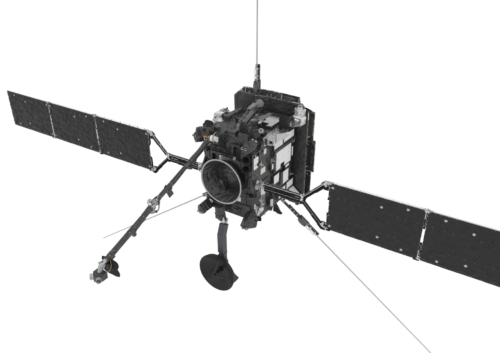
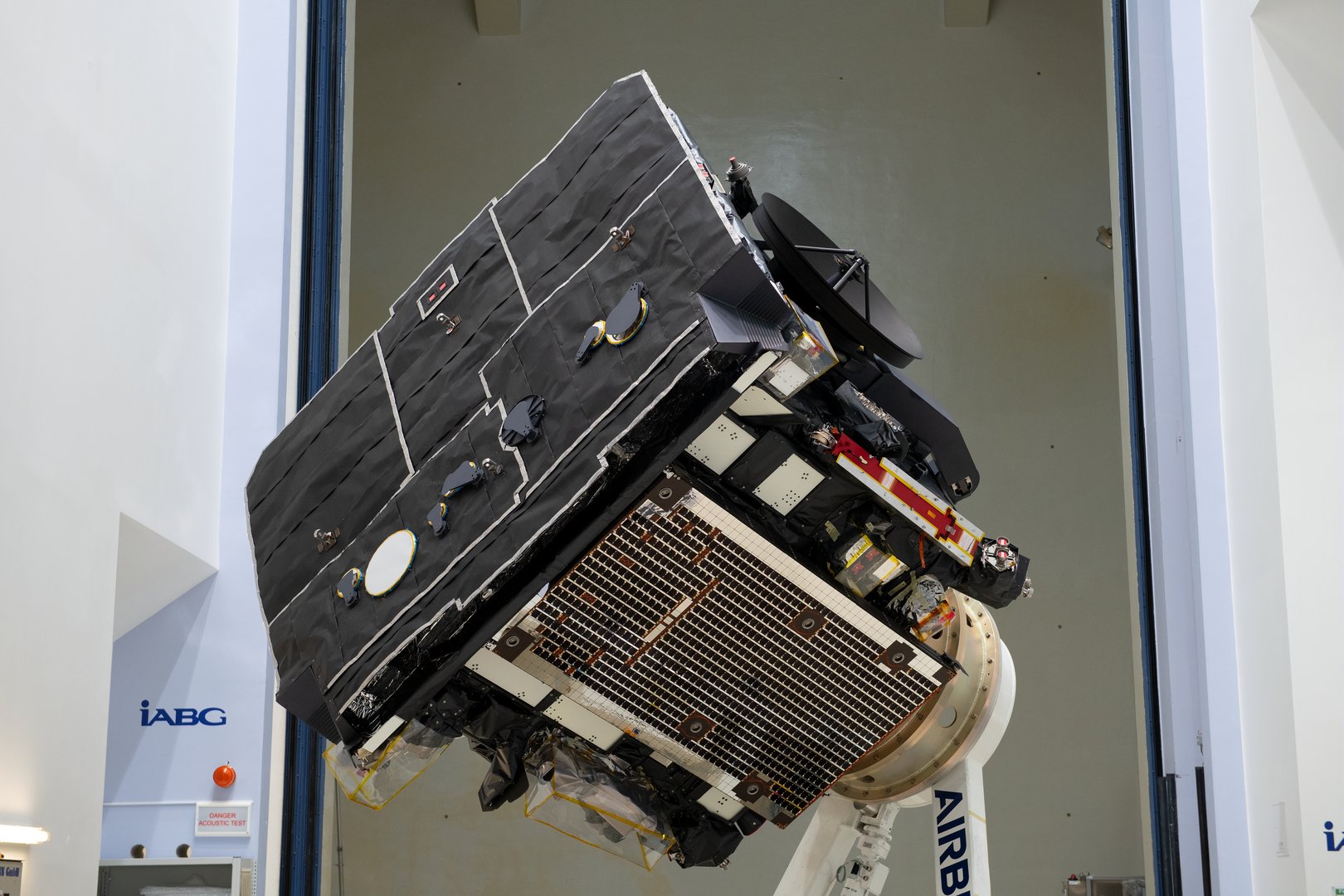
It is designed to last for several years in the extreme environment near the Sun, and really can go on for decades according to César García, Solar Orbiter Project Manager for ESA.
ESA and the mission’s prime contractor, Airbus Defence and Space, have developed unique heatshield technologies with other industrial partners for Solar Orbiter, including SolarBlack, a calcium phosphate preparation applied to the outermost layer of Solar Orbiter’s heatshield. It is tough, able to absorb heat and not decay by shedding layers or gradually turning into gas, no matter how much infrared and ultraviolet radiation it soaks up. Behind SolarBlack are twenty wafer-thin layers of titanium, which can withstand temperatures of up to 500°C. Behind those are a gap, which allows heat to disperse away from the spacecraft.
As well as the rocket, NASA has also provided the SoloHI instrument and the Heavy Ion Sensor, which is part of the Solar Wind Plasma Analyzer (SWA) instrument suite, for the mission (see our interview above for more on that with Haydée M. Maldonado, NASA Solar Orbiter Collaboration (SOC) Project Manager from NASA’s Goddard Space Flight Center).
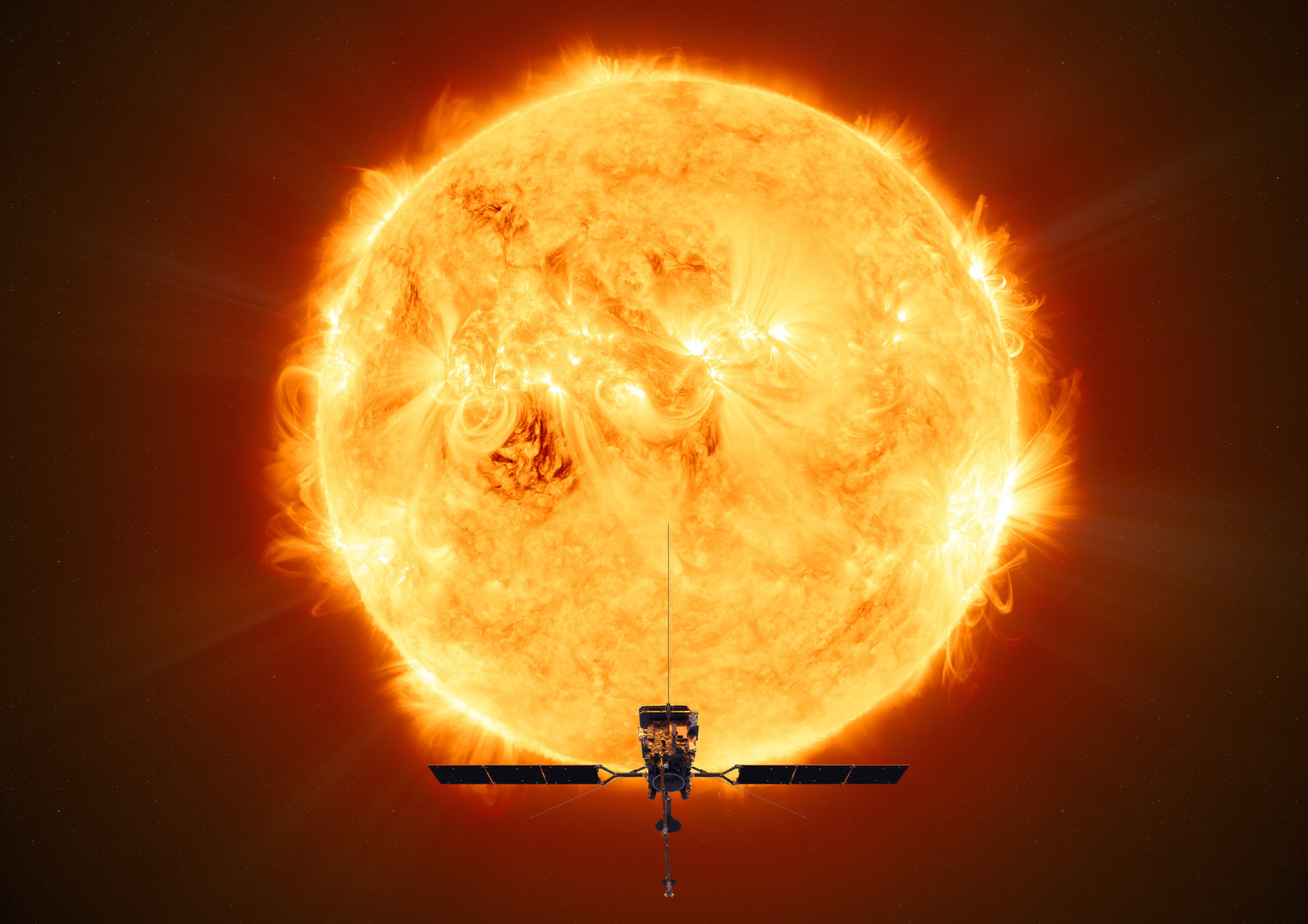
So what exactly does the mission involve and how does it compare to PSP?
Like PSP, it will make repeated orbits of the Sun, and use the gravity of Earth and Venus to steadily raise that orbit above the Sun’s poles, something never done before. Solar Orbiter won’t get as close to the Sun as PSP, but it will take the first-ever images of the Sun’s polar regions, which PSP can’t do. It will collect data on the plasma environment both right around the spacecraft and from the Sun itself; this will help scientists learn more about space weather from the Sun, such as the solar wind, and how it affects our planet. It will study how magnetically active regions evolve for up to four weeks at a time.
Solar Orbiter has a larger payload but compliments PSP by providing contextual information to improve the understanding of PSP’s in situ measurements. The two spacecraft will collect complementary data sets that will allow more science to be gleaned from the two missions than either could manage on its own.
The mission will focus on: the solar wind and the corona’s magnetic field, sudden solar events and their effects, solar eruptions and the energetic particles they produce, and generation of the Sun’s magnetic field.
These are the ten science instruments and what they will do:
In situ:
EPD: Energetic Particle Detector
EPD will measure the energetic particles that flow past the spacecraft. It will look at their composition and variation in time. The data will help scientists investigate the sources, acceleration mechanisms, and transport processes of these particles.
MAG: Magnetometer
MAG will measure the magnetic field around the spacecraft with high precision. It will help determine how the Sun’s magnetic field links to the rest of the Solar System and changes with time. This will help us understand how the corona is heated and how energy is transported in the solar wind.
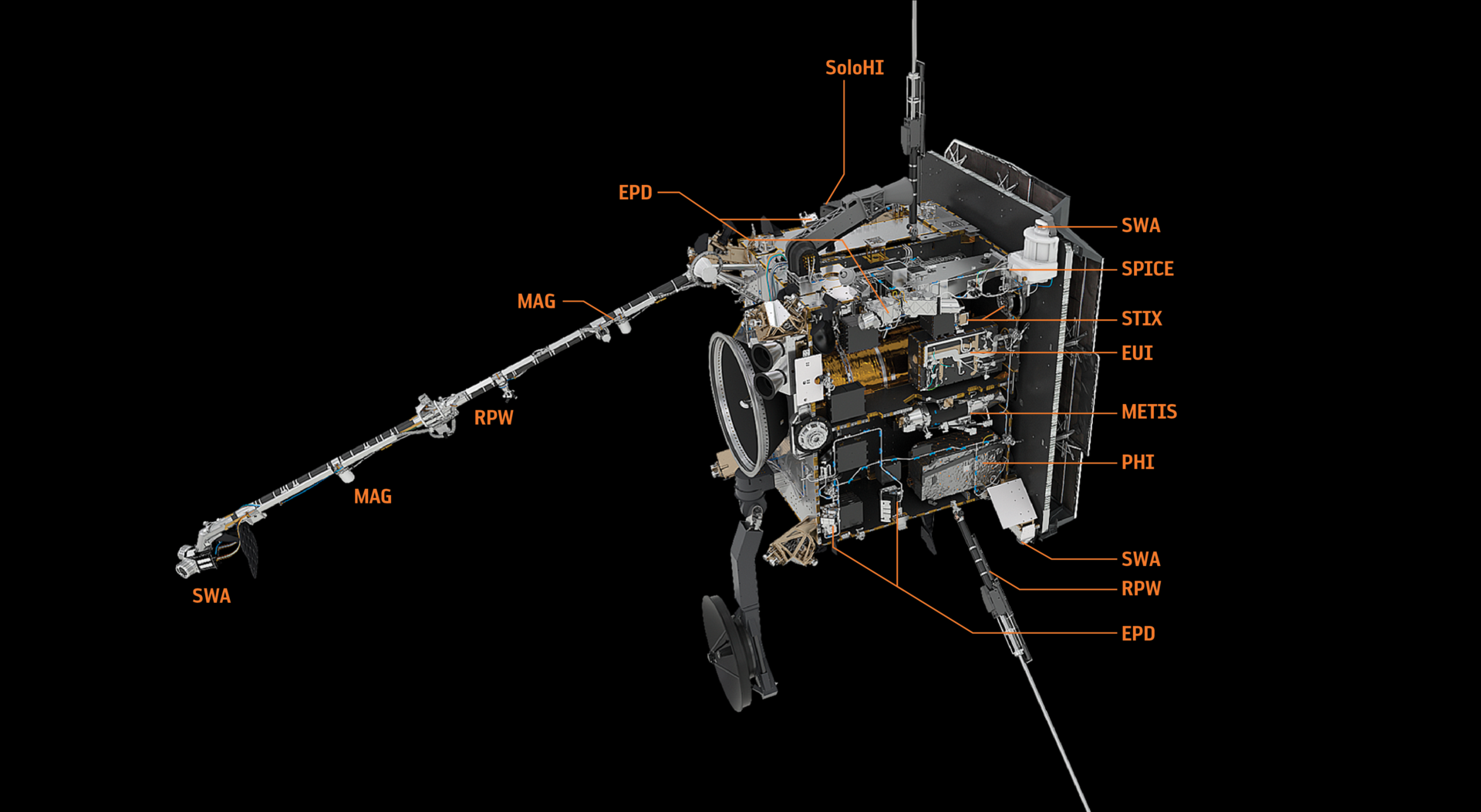
RPW: Radio and Plasma Waves
RPW will measure the variation in magnetic and electric fields using a number of sensors and antennas. This will help to determine the characteristics of electromagnetic waves and fields in the solar wind. RPW is the only instrument on Solar Orbiter that makes both in situ and remote sensing measurements.
SWA: Solar Wind Plasma Analyser
SWA consists of a suite of sensors that will measure the solar wind’s bulk properties, such as density, velocity and temperature. It will also measure the composition of the solar wind.
Remote-sensing:
EUI: Extreme Ultraviolet Imager
EUI will take images of the solar chromosphere, transition region and corona. This will allow scientists to investigate the mysterious heating processes that take effect in this region and will allow connecting in situ measurements of the solar wind back to their source regions on the Sun.
Metis: Coronagraph
Metis will take simultaneous images of the corona in visible and ultraviolet wavelengths. This will show the structure and dynamics of the solar atmosphere in unprecedented detail, stretching out from 1.7 to 4.1 solar radii. This will allow scientists to look for the link between the behaviour of these regions and space weather in the inner Solar System.
PHI: Polarimetric and Helioseismic Imager
PHI will provide high-resolution measurements of the magnetic field across the photosphere, and maps of its brightness at visible wavelengths. It will also produce velocity maps of the movement of the photosphere that will allow helioseismic investigations of the solar interior, in particular the convective zone.
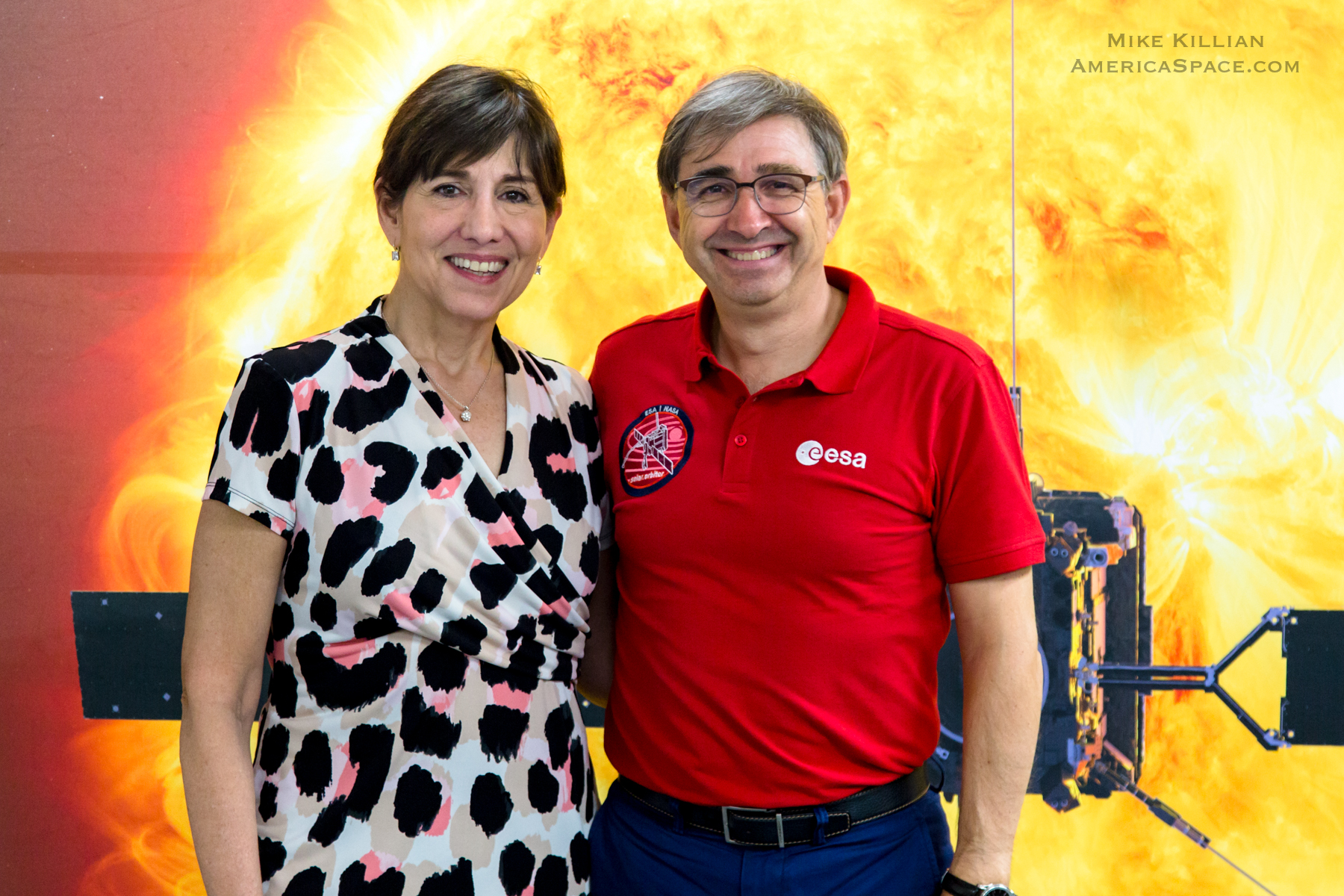
SoloHI: Heliospheric Imager
SoloHI will take images of the solar wind by capturing the light scattered by electrons particles in the wind. This will allow the identification of transient disturbances in the solar wind, such as the type that can trigger a coronal mass ejection, in which a billion tons of coronal gas can be ejected outwards into space.
SPICE: Spectral Imaging of the Coronal Environment
SPICE will reveal the properties of the solar transition region and corona by measuring the extreme ultraviolet wavelengths given off by the plasma. This data will be matched to the solar wind properties that are subsequently detected by the spacecraft’s in situ instruments.
STIX: X-ray Spectrometer/Telescope
STIX will detect X-ray emission coming from the Sun. This could be from hot plasma, often related to explosive magnetic activity such as solar flares. STIX will provide the timing, location, intensity, and energy data for these events so that their effects on the solar wind can be better understood.
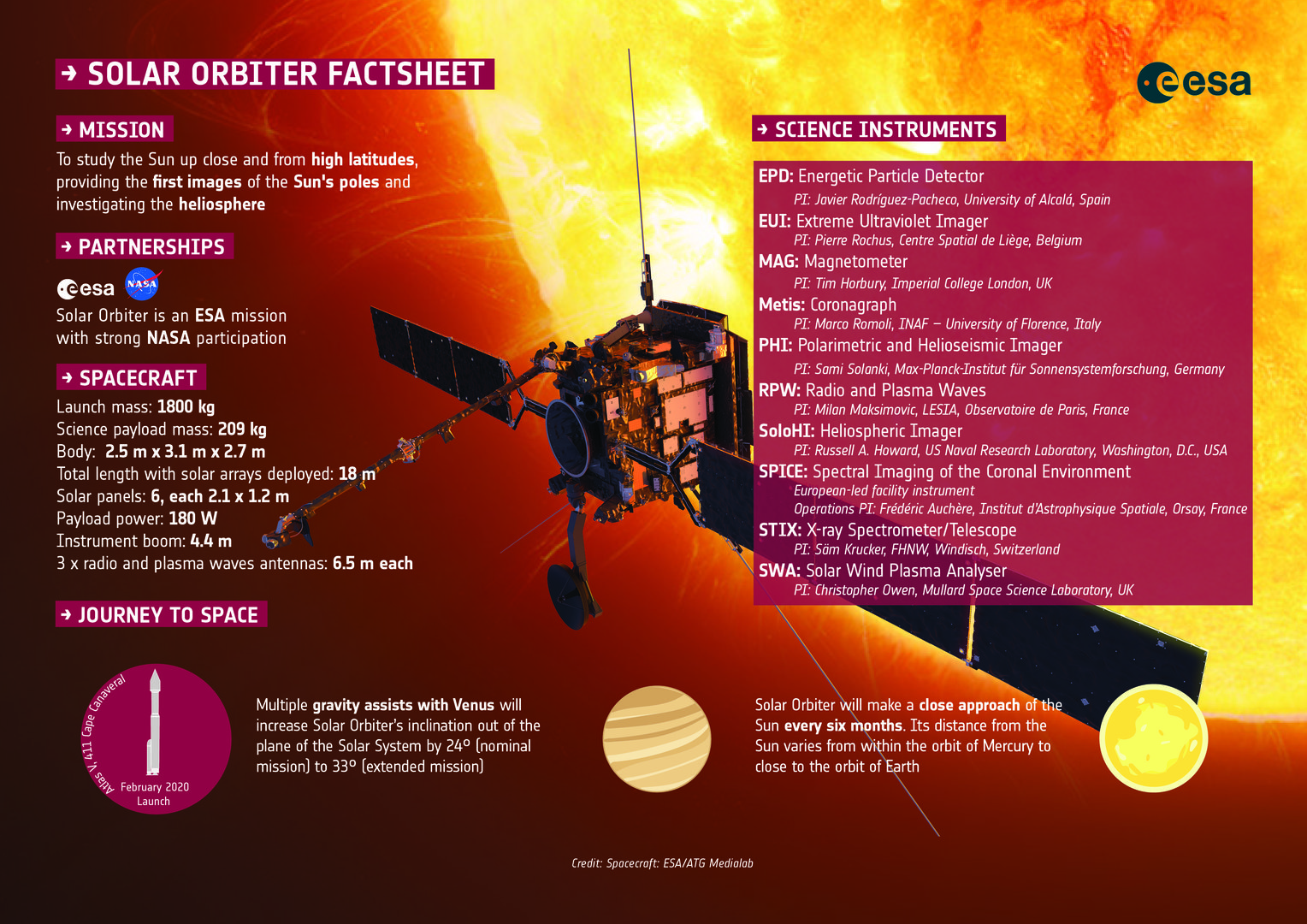
Here is a summary of some mission facts about Solar Orbiter:
- Solar Orbiter will help us understand how our star creates and controls the giant bubble of plasma that surrounds the whole Solar System and influences the planets within it
- Solar Orbiter will take the first images of the Sun’s poles from high latitudes
- Solar Orbiter will combine in situ measurements of the solar wind around the spacecraft with remote sensing, looking at the Sun’s features from afar, to connect the two together
- At closest approach, Solar Orbiter will be about approximately 42 million kilometres from the Sun
- The spacecraft has been tested to withstand temperatures up to 500ºC – it will endure thirteen times the amount of solar heating that satellites in Earth’s orbit experience
- A specially designed black heatshield that will protect the spacecraft and its instruments from the heat of the Sun
- Solar Orbiter will provide context information for NASA’s Parker Solar Probe, which collects data closer to the Sun, but does not have any Sun-pointing cameras
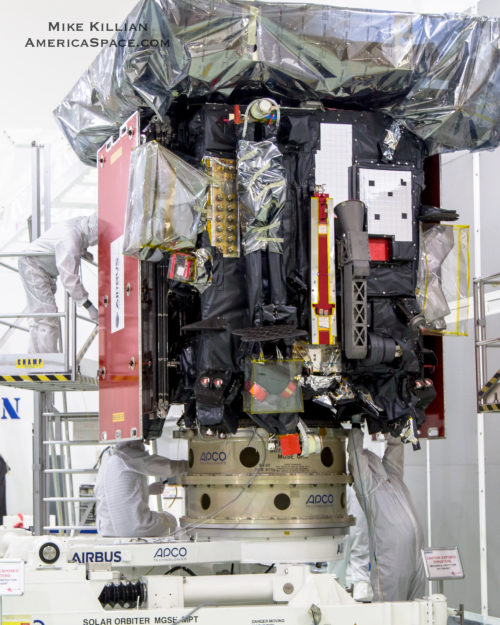
Solar Orbiter is the latest in a series of missions to study the Sun, going back to 1990 with ESA’s Ulysses, but like PSP, will be able to provide images and data never before possible.
Missions like this will help scientists understand our nearest star better – and other stars as well – and how it affects our lives here on Earth.
More information about Solar Orbiter is available on the mission website.
.
.
FOLLOW AmericaSpace on Facebook and Twitter!
.
.
Missions » Parker Solar Probe »



